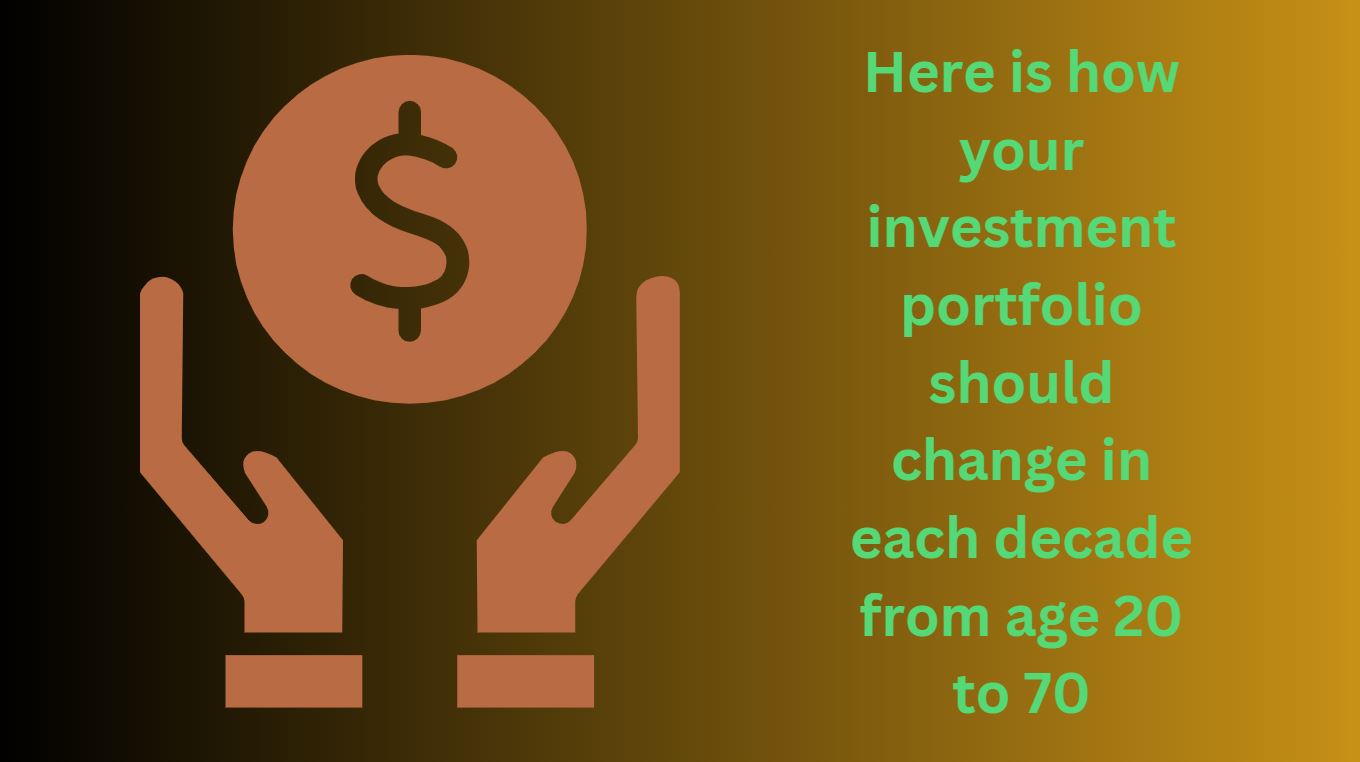Here is how your investment portfolio should change in each decade from age 20 to 70

An investment portfolio is like music, it changes with age. There is a dominant genre for every decade, before 2000 there was rock, between 2000 and 2010, pop dominated the charts, and after 2010 it has mostly been hip hop and electronic music. Similarly, an investment portfolio should change with age to reflect the changing risk appetite and financial goals. Creation of wealth takes a long time when investments are done with proper planning and discipline.
Financial goals should be very clear before starting with asset allocation. Some people want to build their dream home, some want to have enough to send their children to a foreign university, while some just want to retire comfortably. Investment portfolios differ with financial goals as well as the timelines to achieve them. If you want to generate a hefty amount in a relatively short span the risk will naturally increase. There are three main categories of assets—stocks, bonds and cash. Let us take a look at changing the proportion of assets according to age.
Investment Portfolio In Between Age 20 and 30
When you are young, you have your entire life before you to invest. In your 20s you should allot a bulk of your resources to high-return high-risk assets. The proportion of equity in your investment portfolio should be highest in your 20s and 30s. When the investment amount is small, an investor can tolerate market volatility and losses. In the long run, equity tends to give the highest returns but in the short term market movements can be unnerving. For instance, if 300,000 rupees are invested in equities and the market declines by 30 per cent, the temporary loss can be digested when you are in the 20s. But if the amount is 2 million rupees and you are in the 40s, it could be disturbing. The investment portfolio in the decade between 20 and 30 should have 80 percent allocation to equities, 15 per cent to government supported savings schemes like EPF or PPF and 5 per cent should be held as cash. Source: Karvy Online.
Investment Portfolio In Between Age 30 and 40
Depending on your financial goals the portfolio should be readjusted in your 30s. If you have a high-risk appetite, the proportion of equities can be maintained around 70-80 per cent. In a different scenario, if you want to limit the risk associated with equity markets, investing in mutual funds could be considered. Investments in a good mutual fund can generate steady returns with relatively lower risks. You can also consider investing in real estate for a home or to generate rental income. Investments in the government-backed savings scheme should be continued. EPFs give slightly better returns than PPFs as a part of the funds are invested in equities. If you have not taken health insurance, then this is the right time to take one, as with increasing age the premiums will also inch upwards. If you are too risk-averse, a part of investments can be put into buying a life insurance savings plan, that will provide insurance cover as well as some returns. Future Generali Triple Anand Plan is a good option.
Investment Portfolio In Between Age 40 and 50
When you hit 40, the trade-off between lifestyle expenses and savings should aggressively tilt towards savings. People tend to earn the most in the prime of their work life. While investing in their 40s, more preference should be given to lower risk bonds and fixed investments. Although the ratio of equity and bond investment will vary depending on the risk profile. Investments in income-generating mutual funds can be a good option. An effort should be made to have a balanced portfolio, having a mix of equity and debt. If you have not taken an insurance cover, it is the best time to secure your family’s future through a good life insurance policy. Around 5 percent of cash should always be maintained to take advantage of new opportunities.
Investment Portfolio In Between Age 50 and 60
In the last decade of work, you need to analyze the success of your past investments before reallocating resources. The present and desired lifestyle and future goals need to be kept in mind. As you move towards 60 you need to cut back on your equity exposure. An effort should be made to create an alternative income stream from your investments, like ploughing some money into higher dividend paying equity and bond funds. If you plan to keep working for some additional years, you can continue with 60 per cent stock and 40 per cent bond exposure.
Investment Portfolio In Between Age 60 and 70
At this stage, asset allocation will entirely depend on the progress you have made towards your financial goals. The thumb rule of asset allocation is to subtract your age from 100 and the balance should be allocated to equity. For example, if you are 70, equity exposure should be 30 per cent, but many experts say that a 40 per cent exposure to equity can always be maintained. Once you are over 60, the Senior Citizen’s Savings Scheme can be a good investment option. The investments in the scheme qualify for deduction under Section 80C of the Income Tax Act, 1961, and it offers one of the highest interest rates among all small savings scheme.
Image credit- Canva
Discover more from Newskart
Subscribe to get the latest posts sent to your email.


Comments are closed.